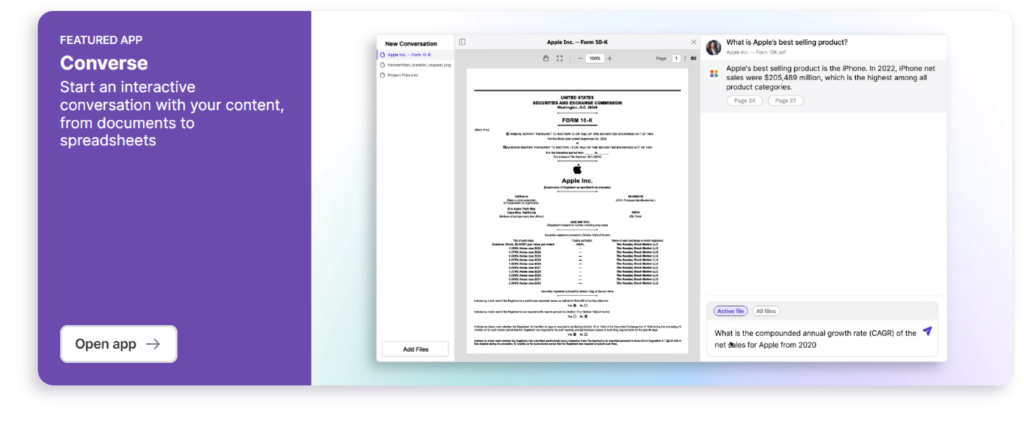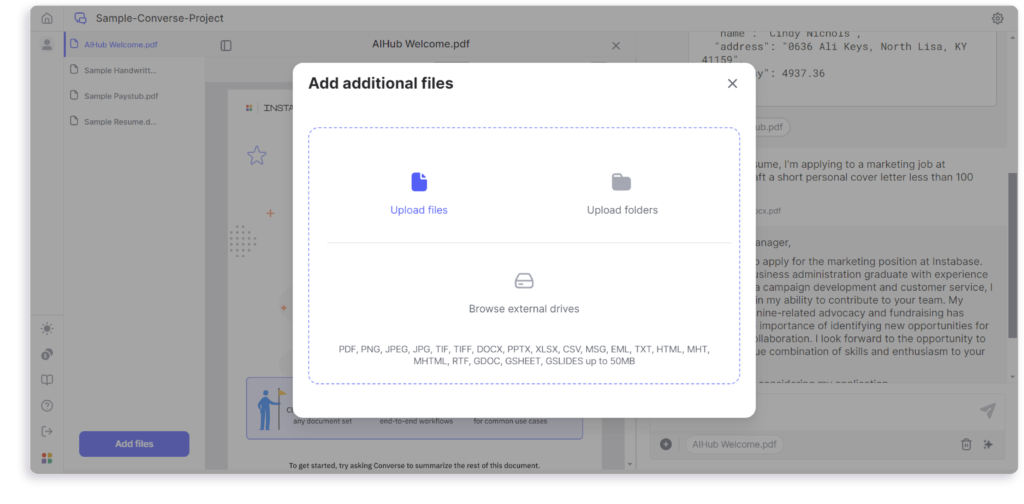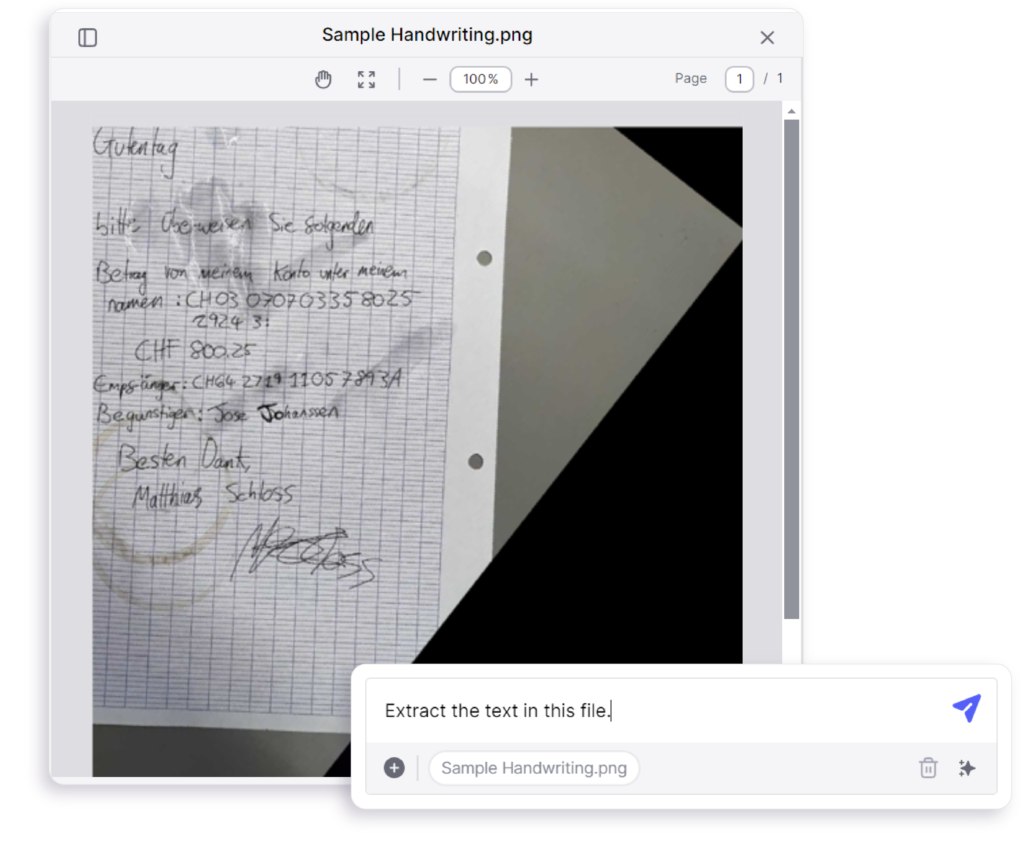
Handwriting Recognition: Benefits, Challenges, and the Role of AI
Handwriting recognition tools allow businesses to digitize handwritten documents easily. Now, AI is making this technology even better.
Despite the rise of digital technologies and online processes, businesses still rely on many handwritten documents. Handwriting recognition (HWR), also known as handwritten text recognition (HTR), refers to technology that has the ability to identify handwriting and convert it into digital, editable text.
Companies use handwriting recognition to digitize, store, and use data in medical records, patient enrollment forms, credit and loan applications, and checks (among many other document types). However, converting handwriting into digital data presents several challenges. For example, optical character recognition (OCR), which has been historically used for this, struggles with accuracy.
The latest advancements in AI, such as vision AI and large language models (LLMs), can be combined with OCR to solve this by increasing accuracy and enhancing the output.
What Is Handwriting Recognition?
Handwriting recognition is the use of technology to convert handwritten text into machine-readable, editable data. HWR tools can identify handwriting from images, scanned documents, tablets, and other devices or formats.
Two Methods of Handwriting Recognition
Handwriting recognition falls into one of two categories: online handwriting recognition and offline handwriting recognition. Businesses may use one method or both, depending on their use cases.
Online Handwriting Recognition
Online handwriting recognition is the real-time conversion of handwriting to digital text as text is being written. It requires an interface with a sensor that can pick up movements, a pen or stylus, and technology that translates the movements on the interface into characters. Online handwriting recognition is usually more accurate than offline handwriting recognition because there are more data points, such as pen pressure and movement, that can be used to identify what’s being written.
Offline Handwriting Recognition
Offline handwriting recognition converts handwriting in images to digital text. It’s useful for turning paper documents into digital files. The process involves taking a photo of the document or scanning it and then uploading the file to the handwriting recognition tool.
Aside from lacking the stroke and direction data that online handwriting recognition provides, offline handwriting recognition is less accurate because it’s also dependent on image quality. Images or scans that are blurry or have skewed text can make it difficult to identify characters correctly.
Benefits of Handwriting Recognition
If your business uses documents that contain handwriting, even if it’s just signatures, you can benefit from handwriting recognition software.

Companies across industries can process documents faster with handwriting recognition, leading to better customer service. HWR can transform insurance claims, credit and loan applications, and onboarding paperwork into data in seconds, saving precious hours compared to manual inputs.
In particular, the medical field is an opportunity where handwriting recognition can have a very meaningful impact, given the large volume of handwritten notes that are usually written quickly. Sloppy handwriting can lead to disastrous consequences for patients, including dispensing the wrong medication or giving the wrong diagnosis. This can result in injury and even death — and issues happen more than you may realize.
TIME Magazine reported that doctors’ messy scrawls cause an estimated 7,000+ deaths each year, along with more than 1.5 million preventable medication mistakes. By turning these notes into digital text, medical practices can drive better patient outcomes.
The extracted data can be used in other systems, allowing companies to personalize their services. They can tailor their content, marketing, and experiences based on the information that a customer supplied in a form or application.

Manually reviewing documents to find information feels like searching for a needle in a haystack. Digitizing documents with handwriting recognition enables users to more easily search for specific data. With faster information retrieval, companies can boost productivity and encourage employees to make more data-driven decisions.

Compared to spending hours sorting, labeling, and filing papers manually, having all the data that you need at your fingertips is advantageous for your business. Employees can easily access and share information when stored digitally, even if they’re not physically located where your office is.
One of the biggest challenges with handwriting is understanding it, as legibility varies from person to person. Digitizing it solves this problem. Anyone can read and understand the information since they don’t have to guess at messy handwriting or decipher shorthand.


Storing large volumes of paper documents isn’t cheap. Record Nations estimates that it can cost companies anywhere from 50 to 95 cents per box per month. Having to maintain physical real estate for all your paper records doesn’t generate revenue, instead it costs you.
Digitizing handwritten notes and documents is a more cost-effective method of data storage because it reduces the amount of physical paper you have. It’s also more secure, as digital data has safeguards, like access privileges, that you can control. While you can lock up physical documents, there’s no way to permanently back them up, you don’t know who’s looking at them, and they can get lost.
Challenges of Handwriting Recognition
Just as humans sometimes struggle to read handwriting, so does handwriting recognition technology. The following challenges with handwriting recognition prevent tools from achieving a high accuracy rate.
- Variability in handwriting: Everyone writes differently, which makes it difficult to accurately identify characters.
- Connected characters: If characters aren’t adequately spaced, it’s challenging to distinguish where one ends and another begins. This is a particular problem with cursive writing.
- Poor image quality: Blurriness and images with noise make it difficult to clearly decipher the handwriting.
- Skewed lines of text: Unlike printed text that follows straight lines, handwriting can be slanted or rotated.
- A lot of training data: Because handwriting is so variable, handwriting recognition technology requires many samples for training. Collecting and annotating such a large volume of samples takes a significant amount of time and effort. However, a potential solution is using synthetic handwriting recognition to generate additional datasets.
The AI-Driven Evolution of Handwriting Recognition
OCR has been the go-to tool for handwriting recognition, but it has its limits. OCR stores fonts and characters as templates and then uses those templates to pattern match against text in images. While it accurately identifies printed characters, it struggles with handwriting due to its high degree of variability.
Machine learning has given rise to intelligent character recognition (ICR), a more advanced form of OCR. ICR recognizes characters more akin to how a human reads, allowing it to handle the vast amount of variation in handwriting.
What makes ICR smarter than OCR is machine learning, specifically artificial neural networks (ANNs) that can learn and adapt over time. As these neural networks process more data over time, their accuracy improves.
Neural networks also make up large language models, which excel at understanding language and context. Large language models can be combined with OCR to achieve even greater accuracy because LLMs can fill in the gaps when OCR can’t match a character to a pattern. By predicting what comes next in these instances, LLMs enable OCR to overcome many of the common challenges with handwriting recognition.
Instabase leverages AI to achieve high accuracy rates when extracting handwriting. By making it even easier to turn handwriting into data, Instabase is empowering companies to unlock the valuable information that’s often trapped in paper documents.
How to Use Instabase for Handwriting Recognition
Machine learning and large language models are core technologies that enhance OCR output, and Instabase uses them to recognize handwriting and accurately turn it into machine-readable text.
Instabase AI Hub is a suite of applications that give you turnkey access to handwriting recognition and other AI capabilities for document and data processing, with no coding or prior experience required. Our Converse app lets you upload your documents and interact with the contents in it. Converse is useful for a wide range of use cases, including extracting handwriting — just follow the instructions below to learn how.
- Go to aihub.instabase.com and open the Converse app.

- Click “Add files” in the bottom-left corner to upload your documents.

- Use the text box in the bottom-right corner to tell Converse what you’d like to do. You can use a natural language prompt like “Extract the text in this file” to identify and extract all of the handwriting in the document, or you can specify the handwriting that you’d like to extract.

- You’ll see extracted text in the right-side panel, which you can then copy and paste into another document or program.


%20(2).png)
.png)
.png)
.png)